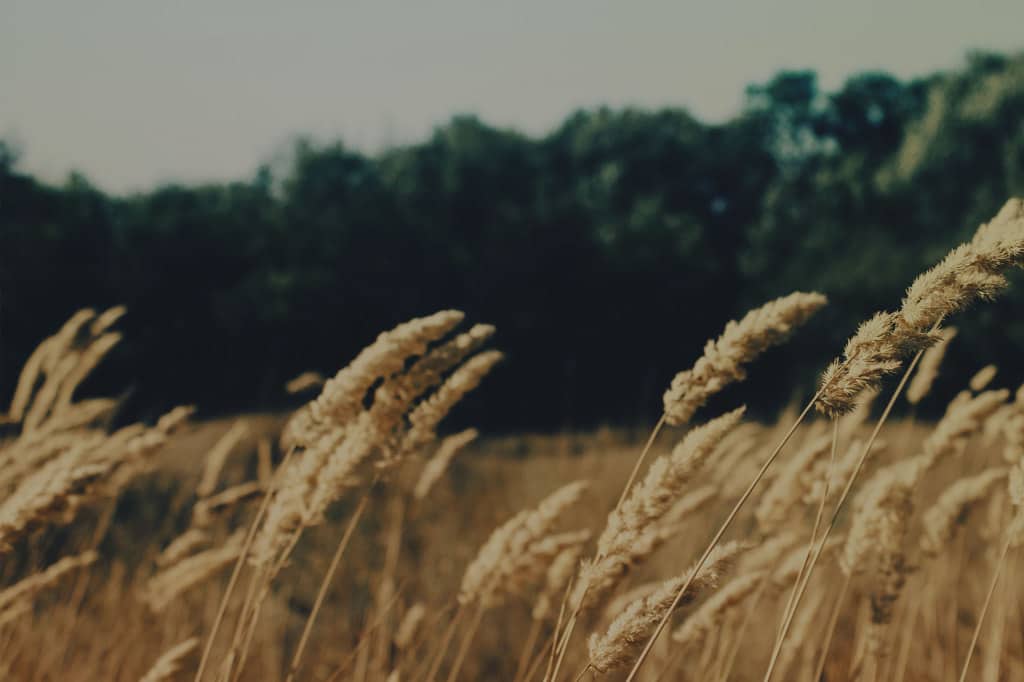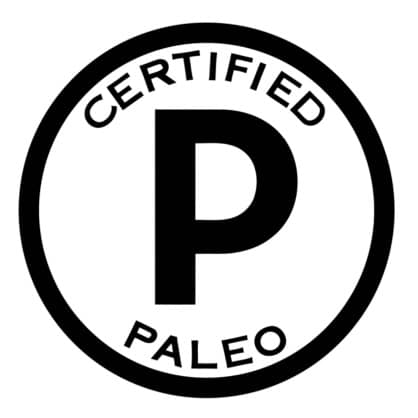
First you went gluten free and felt somewhat better. Then you heard about going grain free (perhaps from those who eat paleo) in hopes that the lingering issues will fade and your life will get back to “normal” faster. Some have found that their “healing” accelerated by taking this step while others don’t feel much of a difference.
Either way, there’s something you should know about eating grain free that no one warns you of online in blogs that praise a grain free lifestyle. It’s why you might not feel better (or even worse) going grain free. And it’s a problematic new trend in the food industry that you need to be aware before you purchase any food products labeled “grain free.”
Why try a Grain Free Diet?
Simply put, some people just don’t feel better going gluten free. Often taking gluten out when it’s caused problems for a long time isn’t enough. Too much damage has been done to the gut and even gluten free grains can be irritating. It’s also possible to be sensitive to grains that are gluten free such as rice and millet. Others may point to potential issues of cross-reactivity between gluten and other gluten free grains, but that’s a longer conversation for another day. And removing grains is part of certain healing protocols such as the Autoimmune Paleo protocol.
Going grain free means that you remove all grains (including corn) and grain-based products from your diet. Unlike the paleo diet, grain free does include legumes. Some say that a grain free diet doesn’t include pseudo-grains (which are considered to be more seeds than grains) such as quinoa or buckwheat, but others will lump them in and eliminate them as well.
 Some will follow a grain free diet for a specific period of time with every intention of adding grains back in at some point. Others swear that all grains are evil and avoid them like the plague. They argue that phytic acid can lead to nutrient depletion… okay, but there’s ways of properly preparing grains to deactivate phytic acid. They’ll drop the lectin bomb and say that lectins also will ruin your gut, but a lot of food (beyond grains and legumes) contain lectins (like strawberries or tomatoes) that are conveniently out of this argument.
Some will follow a grain free diet for a specific period of time with every intention of adding grains back in at some point. Others swear that all grains are evil and avoid them like the plague. They argue that phytic acid can lead to nutrient depletion… okay, but there’s ways of properly preparing grains to deactivate phytic acid. They’ll drop the lectin bomb and say that lectins also will ruin your gut, but a lot of food (beyond grains and legumes) contain lectins (like strawberries or tomatoes) that are conveniently out of this argument.
My point in sharing this is that any type of food elimination should be done with the individual actually doing it in mind. Big sweeping arguments can fail to support bio-individuality and the unique nutritional needs each person has.
Furthermore, I personally don’t believe in vilifying food (especially foods that are natural and whole) as some do because I am concerned that this “good vs evil” food mentality tends to breed disordered eating which is an entirely different problem on top of what someone is already going through. My friend Kaila Prins makes a good case for why fearing certain foods is something to be cautious of.
Either way, going grain free may be of benefit to some and if you’ve adhered to a strict paleo diet (not even having white rice as some will say that it’s occasionally okay), you’ve already been grain free.
Grain Free Food Labels: The Hidden Danger
Because a gluten free diet seems to be all the rage these days as is paleo, some food companies are seeing what’s called a “blue ocean” opportunity to corner the market. There’s so many gluten free products at this point, I’d argue that it’s fairly difficult to stand out now unless a product is truly revolutionary. The paleo food product industry is starting to really boom with better quality options coming to the market as well.
And thanks to the many who are moving towards grain free, a new label has started appearing on food products: Grain Free.
Well, what exactly does grain free mean? The reality is that a product labeled “Grain Free” means exactly that – the product is free from any grains used in its ingredient list. To a gluten sensitive person, that might sound great! You might do dances in the grocery store aisle because it appears you’ve just found another product that you can eat.
Except that “Grain Free” doesn’t mean gluten-free.
It doesn’t mean the company making that product you think is safe tested the product for traces of gluten. They might not even have made sure that the other ingredients were free from gluten contamination which is rampant in our food supply. Case in point — a study of “inherently gluten-free grains, seeds and flours” tested for gluten found that nearly 32% were above the 20 ppm threshold making them ineligible to be labeled as gluten free. (source)
To be clear, the FDA has rules on what can legally be labeled gluten free meaning that if there’s an issue by enough people, the FDA will open an investigation. That’s a nightmare for any company and we recently saw this happen when Cheerios products labeled gluten free (using normal oats via a proprietary process that the company claimed would eliminate gluten) started making people sick. The FDA had to get involved in this case because Cheerios labeled their products “gluten free.”
If you’re not 100% certain of what the label gluten-free means, check out my Ultimate Guide to Understanding Gluten-Free Labels. This also extends beyond food products to restaurant food which is why so many restaurants have changed their “gluten free” menus to some sort of variation with zero legal ramifications should they serve contaminated food.
“Gluten is considered to be a high contaminant because we can’t really see individual proteins of gluten on naturally gluten free food ingredients. Therefore it’s very hard to keep food uncontaminated without a ton of effort (for example, it’s easy to contaminate food products via air circulation or share equipment). We have a very vulnerable food system and unless a food company is going the extra mile to source safe ingredients, keeping them properly segregating, and testing, you probably aren’t buying a safe gluten free products,” shares Heather K. Terry, founder of Nibmor and author of “From Broadway to Wall Street: Cautionary Tales of an Unlikely Entrepreneur.”
“If you’re buying products that don’t have an actual gluten free label, then you’re buying products that aren’t being tested… period.”
One company I spoke to over the past few months who was initially thinking of labeling their products gluten free is now going in the grain free direction. Why? Less risk. It’s an unregulated term that can’t initiate an investigation by the FDA if someone, like you or me, gets glutened by a company’s grain free food product.
 Another troubling problem for our community is the overlap with paleo. While there is currently a certification for paleo products, it’s equally problematic. Certified Paleo Requirements are “Grain-Free, Legume-Free, Dairy-Free, Artificial Coloring, Artificial Preservatives, Artificial Sweeteners and Artificial Flavor Enhancers-Free,” but not gluten free.
Another troubling problem for our community is the overlap with paleo. While there is currently a certification for paleo products, it’s equally problematic. Certified Paleo Requirements are “Grain-Free, Legume-Free, Dairy-Free, Artificial Coloring, Artificial Preservatives, Artificial Sweeteners and Artificial Flavor Enhancers-Free,” but not gluten free.
While I am grateful of the many paleo options out there, I’ve previously voiced concern that paleo doesn’t necessarily equal gluten-free. Too often recommendations for a paleo diet aren’t safe for those who actually need to be gluten free. That’s why you must find a reliable resource like Gluten Free School (sorry for the shameless plug) that understands how to marry them together so that you don’t make a “rookie” mistake and get glutened.
The Bottom Line
 If you must avoid gluten in your food, then you’ve got to look for products labeled gluten free or that hold a “certified gluten free” symbol. Grain free is not (nor may ever be) a safe substitute for gluten free, nor is any sort of paleo certification labeling. Sure, you’ll know if other gluten-free grains were used in the ingredients or that the product may be friendly for a paleo diet, but you won’t know a thing about it’s gluten free status.
If you must avoid gluten in your food, then you’ve got to look for products labeled gluten free or that hold a “certified gluten free” symbol. Grain free is not (nor may ever be) a safe substitute for gluten free, nor is any sort of paleo certification labeling. Sure, you’ll know if other gluten-free grains were used in the ingredients or that the product may be friendly for a paleo diet, but you won’t know a thing about it’s gluten free status.
While I’m sure you’d rather not have to deal with learning more labels, grain free or paleo certified labels are simply not enough. There’s too great of a risk that you will get glutened and you’ve zero options available to you if you do end up sick.
So please… don’t be fooled. Pass this along to your gluten free friends as it could literally keep them from getting unknowingly sick.
NEED MORE HELP?
If you feel like you’re at your wits’ end and fed up knowing what to eat… Or you feel like food is your enemy now that you’ve gone gluten-free and you’re feeling deeply overwhelmed with the process of ridding your life of gluten… I have a really neat opportunity for you so keep on reading!
I decided that I want to talk to you!!! So I’m hosting a special webinar (that’s totally free) where I’m going to talk about the process and myths of going gluten-free as well as how I (and my clients) have gotten to a place of feeling like the lifestyle and diet are a piece of gluten-free cake. If you’ve been GF for less than 2 years, are still struggling to “stay on the wagon,” or haven’t even started going GF yet… this is for you.
To register for the Kick Gluten for Good Q&A –> CLICK HERE to register for Wednesday 4/13 at 8pm ET
Think of it like you and I sit down for a cup or tea (or coffee)… you can pick my brain, ask me your burning questions and I’m going to dish on what’s worked for me and my clients. Plus I’ll have a special surprise for you at the end! BUT please be aware that I will not record this event so if you miss it, then you’ve missed out.
I’ve never done this before and I don’t know if I’ll offer something like this again due to time constraints (school starts again soon)… so pick the time you can commit to and make sure to register for this FREE event. See you there!







So what do you think you reacted to in the grain free product you purchased?
Hi, over the past two months my hands swell to the point I am unable to make a fist. I went to the doctor and had a blood workup which showed an autoimmune flag for scleroderma. The doctor said that it could be gluten intolerance that is causing this and to go gluten free for one month. Attempted to go gluten free and tried my hardest but I’m sure some slip ups. I still have the swelling, but wonder if it’s related to my situation. Have you heard of anything like this regarding gluten?
Hi Trina, yes it’s possible that gluten may have contributed to the triggering of this issue. Many find that autoimmune symptoms improve after removing gluten, but that means no slip ups. It might also require you to look at other things in your diet. I have no clue of what you eat, so I can’t speak to that, but removing refined products and ingredients, sugar, and even dairy… or other food proteins you have an issue with may be necessary. My point isn’t to make you feel overwhelmed, but rather to stress that this is a complex problem. I often have people reach out to me to get more support because doing something like this on their own is just too hard or complex or too many screw ups happen that cause them to not see results. Should you need more support, feel free to reach out for the personalized help that you may need in order to finally start feeling better 🙂
I came up with 31 to the 50 listed Bloating is my major one. I also have RA,maybe Fibro,and neuoethpaty. I have been trying the diet and when I go off,I do not feel good. Dont think my Doctor is very interested in it. Thank u for your free guidance but I am on disability and cant pay for advise but thank u for what u have given.I feel like a know a lot more now.I am going to sign up for your free video and hope I can find out how to get there on my computer.